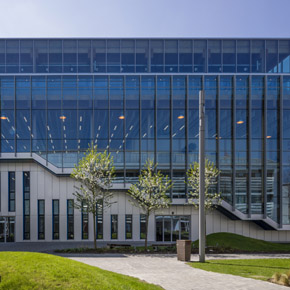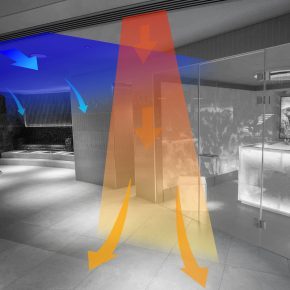
BIM: The benefits of retaining project teams
With the number of professionals involved in the design and construction journey, the structure and composition of project teams changes throughout the duration of each project.
Due to individuals providing specialist knowledge and components during each phase of the build, there is a requirement for enhanced collaboration within the construction industry. X-LAM discusses with PSB Magazine…
Working in such a project-based industry can be challenging due to the interactions taking place between many unfamiliar teams for a relatively short period of time. This can complicate an already demanding environment when it comes to communication, in which technical language and mixed skillsets are so prominent.
However, when executed accurately, it is a great incentive for main contractors to retain project teams across numerous builds. By forming strong relationships and good working practices, seamless collaboration can be achieved across construction teams.
With the use of BIM technology, the industry is able to tackle challenges collaboratively. BIM defines objects as building elements and systems which encompass all the information related to the project and its processes. This allows multi-disciplinary teams to work in unity, bringing their design data into a single, intelligent model.
This process helps to identify design faults, predict and execute the desired building performance, as well as assess and address lifecycle issues during the design stage.
In order to reap the maximum benefits of succinct teamwork during a project, collaborative practices must be incorporated at the very beginning of the initial design process. This can include procurement routes, problem resolution procedures and information management procedures.
The benefits of this approach were clearly demonstrated throughout the design and build of the BSkyB Believe in Better Building project (pictured) which involved high levels of collaboration. This typically comprises a mixture of 3D CAD for concept work and 2D for drafting of statutory approval documentation and Production Information. CAD standards are managed to BS 1192:2007 and electronic sharing of data is carried out from a common data environment (CDE), often managed by the contractor. In this instance, architects and engineers worked together in a shared office throughout the project – allowing them to make real time decisions.
A key demonstration of the use of collaborative working during this project was shown through the detailing of the windows and the interface between them, with the cassettes and glulam frame. As the teams were based in the same office, workshops were able to be quickly assembled in order to ensure the correct details could be developed to meet the requirements for the whole team.
With increasing requirements to design and construct in a more detailed manner and at a rapid pace, there is clearly an imperative to improve industry performance.
Construction professionals must work together to steer the industry towards a more collaborative culture through the use of developments such as BIM technology.
Latest news

2nd April 2025
FIT Show 2025 Launches Innovative Marketplace Feature to Enhancing Value for Installers
FIT Show, the UK’s leading event for the window, door, flat glass, hardware, and roofing industries, is excited to announce the launch of a brand new Marketplace feature at its upcoming 2025 event (Birmingham NEC, 29 April – 1 May).
Posted in Architectural Ironmongery, Articles, Building Industry Events, Building Industry News, Building Products & Structures, Doors, Exhibitions and Conferences, Glass, Glazing, Hand Tools, Innovations & New Products, Plant, Equipment and Hire, Power Tools, Restoration & Refurbishment, Retrofit & Renovation, Roofs, Seminars, Training, Windows
2nd April 2025
Hi-spec deployment of EJOT Colorfast at new Birmingham logistics park
EJOT Colorfast fasteners have been used extensively in the construction of eight new high-specification warehousing and logistics buildings at the Urban 8 Logistics Park in King’s Norton, Birmingham.
Posted in Articles, Building Industry News, Building Products & Structures, Building Systems, Case Studies, Facades, Restoration & Refurbishment, Retrofit & Renovation, Roofs, Walls
2nd April 2025
SWA member delivers ‘fresh Hope’ for university’s Sustainable Building department
A detailed contract to restore an iconic Art Deco building in the heart of Birmingham’s Jewellery Quarter was carried out by Steel Window Association member, The Window Repair Company (Northwest) Limited.
Posted in Articles, Building Associations & Institutes, Building Industry News, Building Products & Structures, Building Systems, Case Studies, Glass, Glazing, Restoration & Refurbishment, Retrofit & Renovation, Steel and Structural Frames, Sustainability & Energy Efficiency, Windows
1st April 2025
Gilberts Takes Thermal Comfort to New Heights
Gilberts Blackpool is continuing to build on its reputation as a pioneer with the unveiling of ThermaAstute™ – the most extensive range of thermally sensitive diffusers in the market.
Posted in Air Conditioning, Articles, Building Industry News, Building Products & Structures, Building Services, Facility Management & Building Services, Heating, Ventilation and Air Conditioning - HVAC, Innovations & New Products, Restoration & Refurbishment, Retrofit & Renovation, Sustainability & Energy Efficiency
 Sign up:
Sign up: 